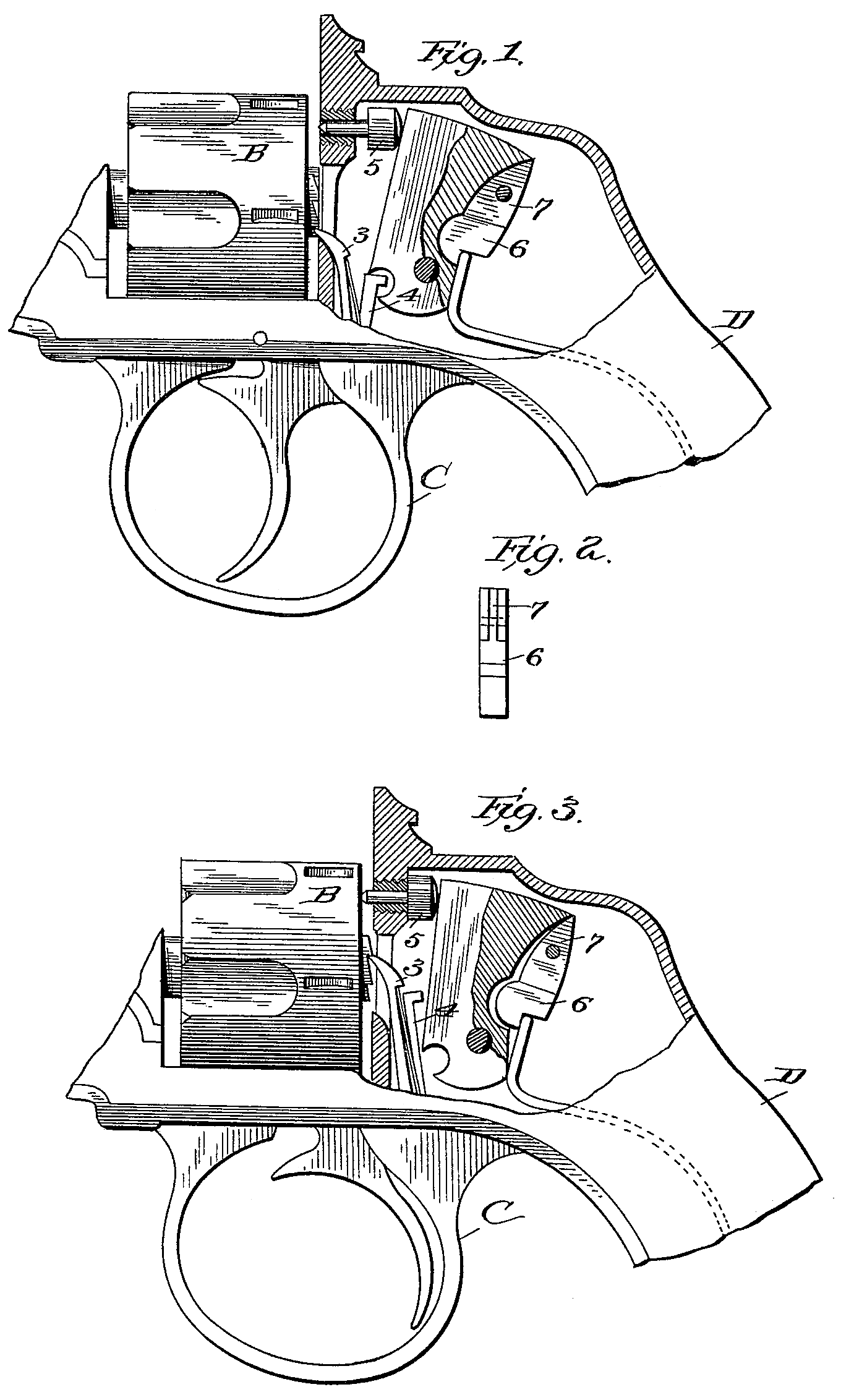US 468243
UNITED STATES PATENT OFFICE.
CHARLES FOEHL AND CHARLES A. WEEKS, OF PHILADELPHIA, PENNSYLVANIA.
REVOLVER.
SPECIFICATION forming part of Letters Patent No. 468,243, dated February 2, 1892.
Application filed September 20, 1890. Serial No. 365,648. (No model.)
To all whom it may concern:
Be it known that we, CHARLES FORHL and CHARLES A. WEEKS, citizens of the United States of America, residing at Philadelphia, in the county of Philadelphia and State of Pennsylvania, have invented certain new and useful Improvements in Revolvers, of which the following is a specification.
The invention relates, particularly, to the hammer mechanism, which includes a rebounding action. In the drawings, Figure 1 is an elevation of a portion of a revolver with parts removed to disclose the hammer, which is retracted. Fig. 2 is an edge view of the hammer; Fig. 3, a view similar to Fig. 1 with the hammer down.
In the drawings the cylinder B, the guard C, the trigger, and the grip D may be of any desired or well-known form.
The cylinder is rotated by the pawl 3. The main part of the hammer is operated by the push-pawl 4 in the ordinary manner to cause the hammer to swing back and then allow it to slip and strike against the firing-pin 5. Our special construction includes a supplemental piece intended to give better rebounding action. The piece marked 6 has a tongue 7 pivoted at its upper end in a slot in the rear upper edge of the hammer. The lower part of the piece has the same thickness as the hammer and fits loosely in a recess cut away to receive it. The end of the mainspring bears against a shoulder on the lower end of this piece, between which and its bearing on the hammer there is a space for movement or lost motion in the action of the spring when giving the blow. When the hammer is down, as shown in Fig. 3, as at the instant of the completion of the stroke, the lower part of the bearing of the spring is against the tail of the hammer below the pivot, and this causes the rebound. The extreme end of the spring still bears on the piece; but the piece does not bear on the hammer, but leaves the hammer sufficiently free movement for the rebound. When the parts are brought into position shown in Fig. 1, then the bearing is full.
We claim as our invention—
In combination with the hammer, a pivoted supplemental piece, with the mainspring arranged to bear upon said piece and upon the tail of the hammer, substantially as described.
In testimony whereof we affix our signatures in presence of two witnesses.
CHARLES FOEHL,
CHAS. A. WEEKS.
Witnesses:
ROBT. M. FRANKS,
JACOB S. DUVALL.

